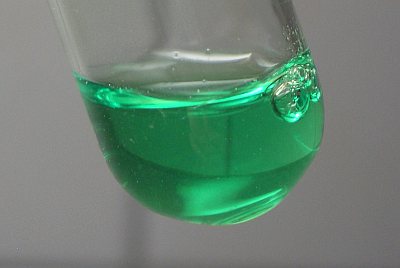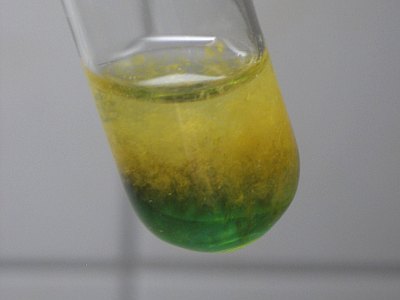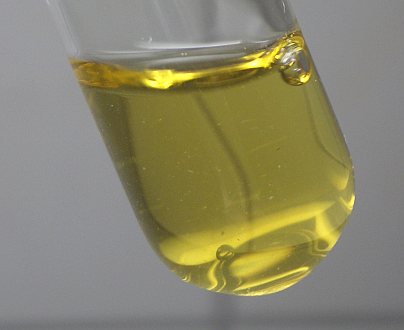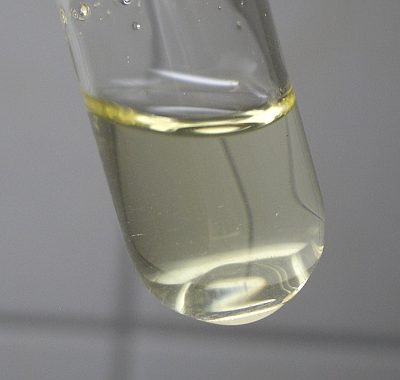


Making copper(I) in solution
This webpage is a helper page for the experiment in which Cu2HgI4 is prepared. This webpage describes how to make a solution, which contains copper(I), coordinated to chloride ion. The copper(I) will be in solution as CuCl2– ions, with extra chloride ions and sulfite ions to protect them from aerial oxidation.
Perform the following steps for making the copper(I) solution:
- dissolve some copper(II) chloride or copper(II) sulfate in water;
- add a spatula full of sodium chloride to this solution, resulting in a green solution of a mix of chloro-copper(II) complexes, mostly CuCl42-:

- prepare a solution of sodium sulfite and add a small part of this to the green solution, shown above, resulting in a dirty brown/yellow precipitate:

- slowly add more sulfite, while swirling the test tube;
- keep on adding sulfite, until the precipitate redissolves again and the liquid turns clear yellow/brown:

- this liquid still contains copper(II), causing the yellow color (traces of mixed oxidation-state complex)
- add a little more sulfite and heat the solution, until it only has a faint color:

The liquid, shown in the last picture, is suitable for the experiment with the mercury compound. The faint yellow color most likely is due to traces of a copper(I)/copper(II) mixed oxidation compound, which does not disappear.
The following reaction equation can be regarded as a suitable (albeit somewhat simplified) balanced equation for the total reaction:
3SO32- + 2CuCl42- + H2O → SO42- + CuCl2– + 2HSO3– + 4Cl–
The equation assumes that all copper(II) is present as CuCl42-, while in reality a little more nuance should be attributed to this. This, however, is not essential for this description, the essential part is that chloride ion is required for this reaction to occur, otherwise the sulfite does not reduce the copper(II) to copper(I), but only a precipitate of copper(II) sulfite is formed.
back to page on mercury chemistry